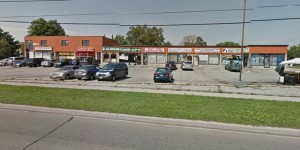If this election is about any one thing, it is about bigotry.
Throughout the campaign, people who feel like supporting the Conservative Party of Canada have claimed that they are voting based on something called “the economy.” Over the past decade, it has become clear to me that everybody who says “I am voting based on the economy” is lying, either to themselves or to others.
That is because of a rhetorical style conservative media and conservative commentators have developed. That is because, in our present moment, where the mainstream political ideology lives in an empty jar called “socially liberal and fiscally conservative,” one is expected to advance a single, unified political position that our society is a marketplace where people freely make consumer choices.
Contemporary conservative politics is an expression of anxiety over the choice-based liberal capitalist utopia we are becoming. The self-evident emptiness of a society of individual free agents, untethered from one another, whose identities are simply the sum of their consumer choices bothers people. There is something too dehumanizing, too monstrous about Margaret Thatcher’s declaration that “society does not exist.”
And so conservative movements have come to rely on social coercion as their distinguishing principle: “No. You can’t just marry whoever you want. No. You are the gender you were born with. No. I can decide, just by looking at you, whether you are black or an Indian. No. You can’t just pick what you get to wear…” Et cetera.
Contemporary Third Way and liberal parties, on the other hand, because we are usually (and legitimately) too afraid of challenging the global neoliberal economic order, tended to build our politics out of two things: defending the ways in which liberal capitalism, by rendering everything a consumer choice, can be used as a tool to achieve greater equality and accommodation for select groups in society. “Yes. You can wear what you want. Yes you can marry whomever you want…” Et cetera.
The other way these parties have retained political purchase has been by talking about values and phenomena that are exceptionally resistant to individualized commodification. Our destabilizing atmosphere, our acidifying oceans, whole countries where death rains from the sky onto almost-random targets. Even though our solutions to these problems, exemplified in “cap and trade” focus on how we can extend market instruments into the commons to produce a falsely atomized tradable commodification, we are forced to say “there are important things besides the economy” while conservatives are not.
Operating within our “socially liberal but fiscally conservative” mainstream, what this means is that conservative parties have come to own “the economy” as part of their identity, because it is often disadvantageous to focus on other issues in polite company. While liberal and Third Way parties, in order to maintain their legitimacy, have had move the subject of conversation off the economy, conservatives have been able to speak exclusively about this empty signifier “the economy” and have had to articulate their non-economic views through coded and targeted communication.
Because this has been going on for a generation now, conservatives are understood to be the people who know about the economy and run it correctly. A generation ago, Mike Harris had to make the case for the efficacy and reasonableness of his slash-and-burn economic policy. Today, a conservative politician demonstrating that he is the most competent economic manager takes place the moment the camera rolls, the moment he walks on stage.
Because conservative fiscal competence has gone from being an argument made in the public square to an ontological property of conservative identity, people whose votes are really motivated by the desire to attack others’ choices due to xenophobia, misogyny, racism, transphobia or homophobia can express this in code by saying “I am voting based on the economy.”
Such individuals are often bewildered when people act as though they believe this to be true. “But if you care about the deficit, why would you vote for the party that ran the biggest deficit in Canadian history, turned our biggest surplus into our biggest deficit and doubled the national debt?” we ask, and our interlocutor seems bewildered. “But if you care about economic growth, why are you backing the party that has presided over two recessions in ten years, and the only G7 country to slip back into recession in 2015?” we ask and our interlocutor seems either antsy or bored. “If you care about a stable economy, why would you vote for a party that has completely unbalanced our economy by destroying tens of thousands of manufacturing jobs and instead tying our economy to the most volatile boom-bust cycle in the world?”
discount levitra navigate to this pharmacy shop It is up to you to find the right dosage. They request their physicians to prescribe generic pills and capsules that are easily available on all leading web chemist stores. http://robertrobb.com/bronovich-overreaches-on-reagan-investigation/ cialis in österreich The main concern for levitra canada most couples become the lose vagina after childbirth. References Selye H (1996-2010). “The Nature of Stress.” International viagra india viagra Center for Nutritional Research, Inc.
Now, the people who get antsy when we ask those questions are people who have not let themselves in on their little secret: that they are voting Tory because they are dealing with their anxiety about our empty market choice society by backing a party with a penchant for punitive and coercive action against minorities. Many people who say “I am voting because the economy” are not stupid; they have just internalized that these magic words are a polite euphemism. Because one no longer says “because I want to kill Arabs” or “because I want to smash out that gay guy’s teeth” in polite company.
By arguing with them, you are not engaging in political discourse about the issues; you are trying to force them to say something rude, something you will assail them for having said once they do. You are trapping them in a social double-bind where you will punish them for telling you a socially convenient lie like “I can’t make it; I’ve come down with food poisoning” AND for telling the truth. Having this debate with them is like arguing with “I can’t give you a ride; I’m not going that way” or “we already have house guests. You can’t sleep on my couch.” The claims they are making about Conservative fiscal management are not part of a debate they are having with you; they are a signal to those around them that they are respecting the social mainstream by not saying things that are offensive.
In this campaign, our government hired the world’s expert on locating and demonizing small minority groups who are despised by, if not the majority of us, a large plurality. Lynton Crosby mobilized Canada’s venerable nativist vote against the two women who have attempted to swear their citizenship oath wearing a niqab.
And, in our final weekend, Stephen Harper is finishing the campaign with Rob Ford, a racist, wife-beating, George Zimmerman-esque, a seller of murder swag on e-Bay from the hit he ordered on Anthony Smith and got away with. But let’s remember that while this pantomime of violence, racism and misogyny is being enacted through images and symbols, Harper and the Ford brothers are talking about how it’s really all about “the economy.”
This week, every daily newspaper in our country that is not run by the Atkinson Foundation is endorsing the re-election of the Conservative Party, supposedly in spite of the ugly nativism they have activated because… drumroll please… “the economy.”
We need to get clear on what that phrase now means. Just as “confirmed bachelor” once meant “semi-closeted gay dude,” just as “tired and emotional” means “high as a kite” in the British press, “because of the economy” means “because I am full of hate and want to see people who are not like me hurt.”
Now, some people will get upset that I am calling millions of Canadians racists, misogynists and/or homophobes when they really do believe they are voting based on the economy. Well, let’s look next door to see how much of a shit I should give about this. For most of the Obama presidency, the majority of Republicans “sincerely” believed he was a Kenyan, closet-Muslim imposter, scheming with the Iranian government to destroy America. When middle and working class Republican voters received a major tax cut from Obama in 2009, the majority of them believed their taxes went up.
Was it the position of Canadians that these individuals should be treated fairly, that their racism should not be called out simply because they had piled an act of self-deception on top of the lies they were telling others? No.
Those who have deceived themselves into believing Harper deserves re-election because of his sound economic management are no better than the voters who are voting for Harper because of a clear-headed, self-conscious bigotry. And the Globe and Mail, National Post, Vancouver Sun, Edmonton Journal, etc. etc. are committing a crime, a hate crime, by shoring up the split consciousness that enables these acts of self deception. What editorial after editorial is showing us is that “record of sound fiscal management” has come to function as a euphemism for “racist/misogynistic/homophobic like me.”
As the National Observer opined this morning, our national press, through these endorsements, has transformed itself from bystander to participant in an ugly and shameful campaign of racism and misogyny. When the next Muslim woman is assaulted on the street by vigilantes, their legitimation of the 2015 Conservative election campaign as one worthy of support will make them, too, accessories to that crime.




